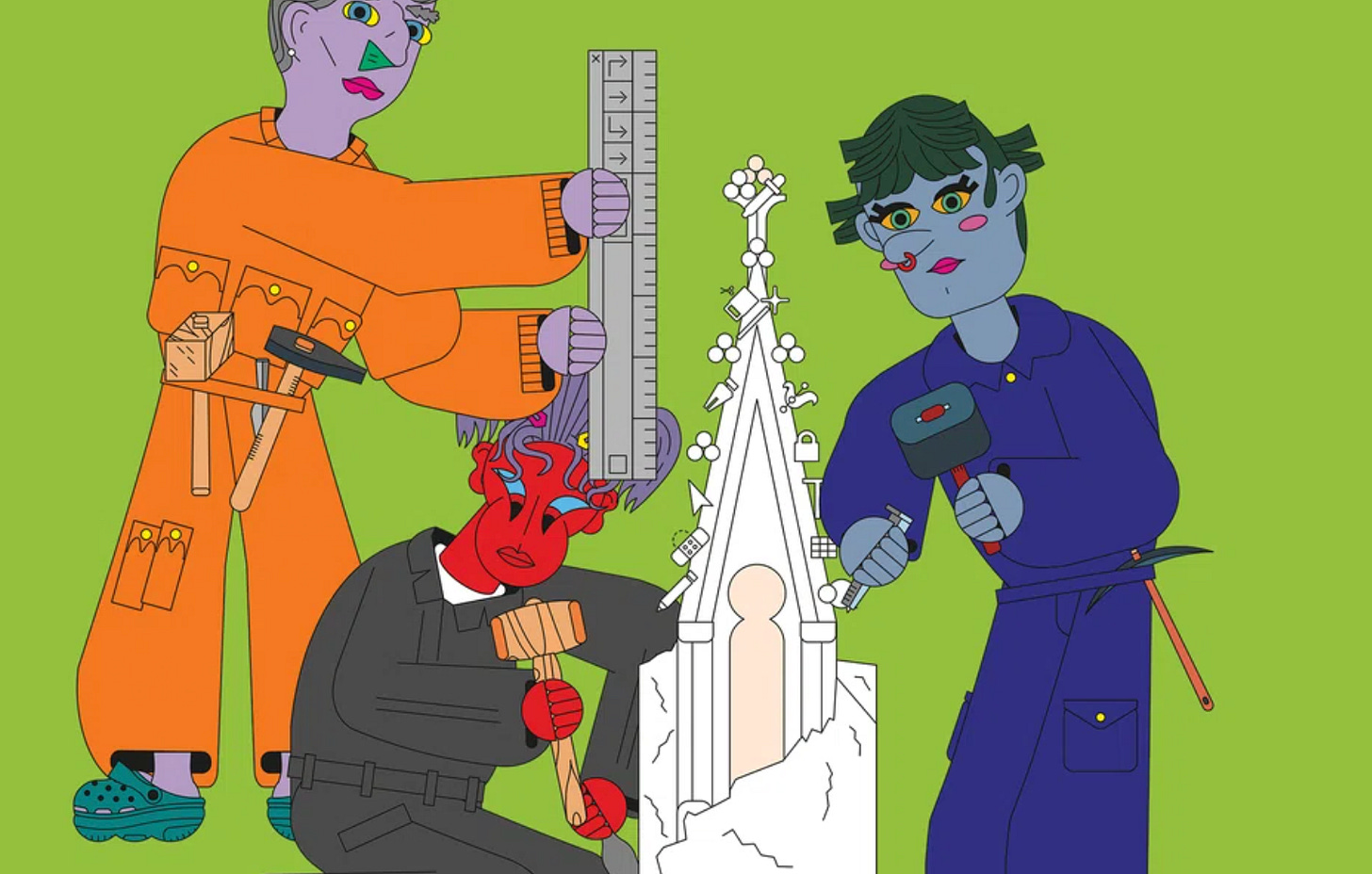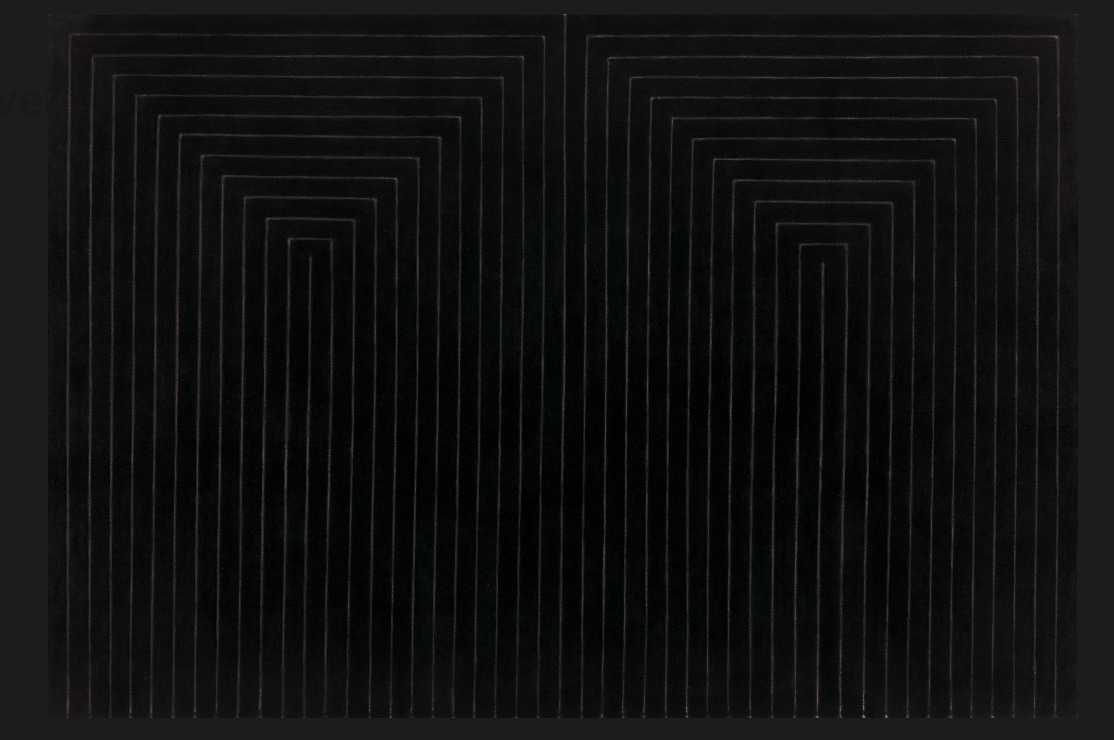An issue dedicated to all things art.
St Vincent on Dave Grohl and Drumming
Lots of infectious enthusiasm and appreciation here from Annie Clark who explains in detail the process behind one of the songs from her new album and what Dave Grohl did with the drums on the track.
Flags and Political Self-Identity
“American artist Joshua Citarella trawls the message boards of 4chan, Reddit, and other such platforms, collecting designs for flags that express young people’s political self-identifications. The designs he has collected combine wildly opposing discursive systems in a sort of schizophrenic mélange: “Islamic, fascist, anarchist, steampunk!” They seem so absurd, but why? Because they are attempts to fit different filter bubbles within one another. By collapsing incommensurate universes into a single image, these oxymoronic “e-deologies” end up reflecting contemporary conspiracy mindsets, like QAnon.”
From the Art Forum Review of “The Poetics of Encryption”- Berlin
Fashion Army
“The corpus of images presented in Fashion Army is drawn from a recently declassified archive covering the late 1960s to early 1990s, consisting of 14,134 scans of negatives from the Natick Soldiers Systems Center, a U.S. Army's research and development unit. Although the source of this archive has been identified, its purpose remains unknown. There is no trace of its circulation. All that remains is the possibility of supposing its intention: that of a photographic collection for internal use by a military unit still in operation, known to be responsible for testing prototypes of soldiers' uniforms and equipment. When questioned about its purpose, the U.S. Army was not able to respond and devote resources to answer our questions, sticking to indifference.”
Fashion Army- On show at the Arles Les Rencontres De La Photographie- July-September 2024
Lucy Prebble on the Succession Writers Room Experience
“Prebble tells Wilson that being part of a writers’ room on Succession changed her. “I write now with a much greater sense of openness,” she says. “I’ll show writing to people earlier. I still feel vulnerable, of course, but I feel less wounded by criticism and doubt. I now really do experience it, if you show it to the right people, as a sort of love. Like, ‘I would love this to be better and I’d love to help you and here are some thoughts I have.’ That’s all come from just the safety and support of the Succession writers’ room.” She’s not sure what her next project will be, and that’s OK. “I’m in the phase now of I can’t imagine how I’ll ever write anything ever again… The thing is that as you get older you get used to that feeling and you remember it from last time. Something will come. It always does.”
Why Creative Labor Isn’t Always Seen as Real Work
“Of course, we’re no longer in a patronage system – although platforms like Patreon have offered an alternative to a market economy for artists – and most creatives need to make a living one way or another. These days, just like other workers, designers and illustrators work for their wages. Unlike other workers, however, the old ideals tied to creativity and art change how artists relate to their work. The worst client offenders consider themselves deserving of praise for the sheer act of paying an artist at all, or worse still, demand work for free or “exposure.” Meanwhile artists are left ignoring many labour red flags for the sake of romantic self-expression and a hope that the next project will be better.”
Pio Abad
Pio Abad is a Turner Prize finalist who explores the complex narratives of objects paying special attention to the Phillipines.
Frank Stella- The Marriage of Reason and Squalor II- 1959- MOMA Collection
Quotes from Frank Stella
What painting wants more than anything else is working space—space to grow with and expand into, pictorial space that is capable of direction and movement, pictorial space that encourages unlimited orientation and extension. Painting does not want to be confined by boundaries of edge and surface." (Frank Stella, Working Space, 1986)
I want to make paintings that are so direct, so simple, so obvious in their physical being, that the minute you see them you know exactly what they are." (Frank Stella, Interview with Alan Solomon, 1966)
“I always get into arguments with people who want to retain the old values in painting—the humanistic values that they always find on the canvas. If you pin them down, they always end up asserting that there is something there besides the paint on the canvas. My painting is based on the fact that only what can be seen there is there." (Frank Stella, Interview with Bruce Glaser, 1966)
"My painting is based on the fact that only what can be seen there is there. It really is an object... What you see is what you see." (Frank Stella, Interview with Bruce Glaser, 1966)
“I'm not interested in expression. I'm interested in being able to manipulate the material to the point where I can do what I want with it, and organize it in the way that I want to organize it." (Frank Stella, Interview with Caroline Jones, 1991)
Frank Stella 1936-2024







